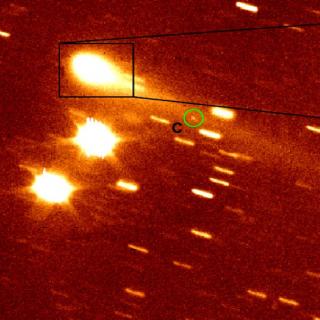Bibcode
Snodgrass, C.; Jones, G. H.; Boehnhardt, H.; Gibbings, A.; Homeister, M.; Andre, N.; Beck, P.; Bentley, M. S.; Bertini, I.; Bowles, N.; Capria, M. T.; Carr, C.; Ceriotti, M.; Coates, A. J.; Della Corte, V.; Donaldson Hanna, K. L.; Fitzsimmons, A.; Gutiérrez, P. J.; Hainaut, O. R.; Herique, A.; Hilchenbach, M.; Hsieh, H. H.; Jehin, E.; Karatekin, O.; Kofman, W.; Lara, L. M.; Laudan, K.; Licandro, J.; Lowry, S. C.; Marzari, F.; Masters, A.; Meech, K. J.; Moreno, F.; Morse, A.; Orosei, R.; Pack, A.; Plettemeier, D.; Prialnik, D.; Rotundi, A.; Rubin, M.; Sánchez, J. P.; Sheridan, S.; Trieloff, M.; Winterboer, A.
Bibliographical reference
Advances in Space Research, Volume 62, Issue 8, p. 1947-1976.
Advertised on:
10
2018
Journal
Citations
31
Refereed citations
26
Description
We describe Castalia, a proposed mission to rendezvous with a Main Belt
Comet (MBC), 133P/Elst-Pizarro. MBCs are a recently discovered
population of apparently icy bodies within the main asteroid belt
between Mars and Jupiter, which may represent the remnants of the
population which supplied the early Earth with water. Castalia will
perform the first exploration of this population by characterising 133P
in detail, solving the puzzle of the MBC's activity, and making the
first in situ measurements of water in the asteroid belt. In many ways a
successor to ESA's highly successful Rosetta mission, Castalia will
allow direct comparison between very different classes of comet,
including measuring critical isotope ratios, plasma and dust properties.
It will also feature the first radar system to visit a minor body,
mapping the ice in the interior. Castalia was proposed, in slightly
different versions, to the ESA M4 and M5 calls within the Cosmic Vision
programme. We describe the science motivation for the mission, the
measurements required to achieve the scientific goals, and the proposed
instrument payload and spacecraft to achieve these.
Related projects

Small Bodies of the Solar System
This project studies the physical and compositional properties of the so-called minor bodies of the Solar System, that includes asteroids, icy objects, and comets. Of special interest are the trans-neptunian objects (TNOs), including those considered the most distant objects detected so far (Extreme-TNOs or ETNOs); the comets and the comet-asteroid
Julia de
León Cruz